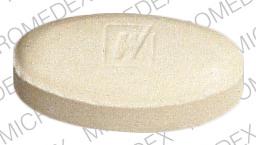Nalidixic acid and Alcohol/Food Interactions
There are 2 alcohol/food/lifestyle interactions with nalidixic acid.
Nalidixic Acid Caffeine
Moderate Drug Interaction
Using caffeine together with nalidixic acid may increase the effects of caffeine. Contact your doctor if you experience headache, tremor, restlessness, nervousness, insomnia, and increased blood pressure or heart rate. If your doctor does prescribe these medications together, you may need a dose adjustment or special test to safely use both medications. It is important to tell your doctor about all other medications you use, including vitamins and herbs. Do not stop using any medications without first talking to your doctor.
Nalidixic Acid Multivitamins With Minerals
Moderate Drug Interaction
Nalidixic acid and multivitamin with minerals should not be taken orally at the same time. Products that contain magnesium, aluminum, calcium, iron, and/or other minerals may interfere with the absorption of nalidixic acid into the bloodstream and reduce its effectiveness. If possible, it may be best to avoid taking multivitamin with minerals while your are being treated with nalidixic acid. Otherwise, you should take nalidixic acid either 2 hours before or 2 hours after the multivitamin with minerals dose. Talk to a healthcare professional if you are not sure whether a product contains something that could potentially interact with your medication or if you have questions on how to take this or other medications you are prescribed. It is important to tell your doctor about all other medications you use, including vitamins and herbs. Do not stop using any medications without first talking to your doctor.
Switch to professional interaction data
Nalidixic acid drug interactions
There are 314 drug interactions with nalidixic acid.
Nalidixic acid disease interactions
There are 8 disease interactions with nalidixic acid which include:
- colitis
- liver disease
- CNS disorders
- myasthenia gravis
- peripheral neuropathy
- tendonitis
- crystalluria
- diabetes
More about nalidixic acid
- nalidixic acid consumer information
- Check interactions
- Compare alternatives
- Reviews (3)
- Side effects
- Dosage information
- During pregnancy
- Drug class: quinolones and fluoroquinolones
- Breastfeeding
Related treatment guides
Drug Interaction Classification
| Highly clinically significant. Avoid combinations; the risk of the interaction outweighs the benefit. | |
| Moderately clinically significant. Usually avoid combinations; use it only under special circumstances. | |
| Minimally clinically significant. Minimize risk; assess risk and consider an alternative drug, take steps to circumvent the interaction risk and/or institute a monitoring plan. | |
| No interaction information available. |
See also:
Further information
Always consult your healthcare provider to ensure the information displayed on this page applies to your personal circumstances.


